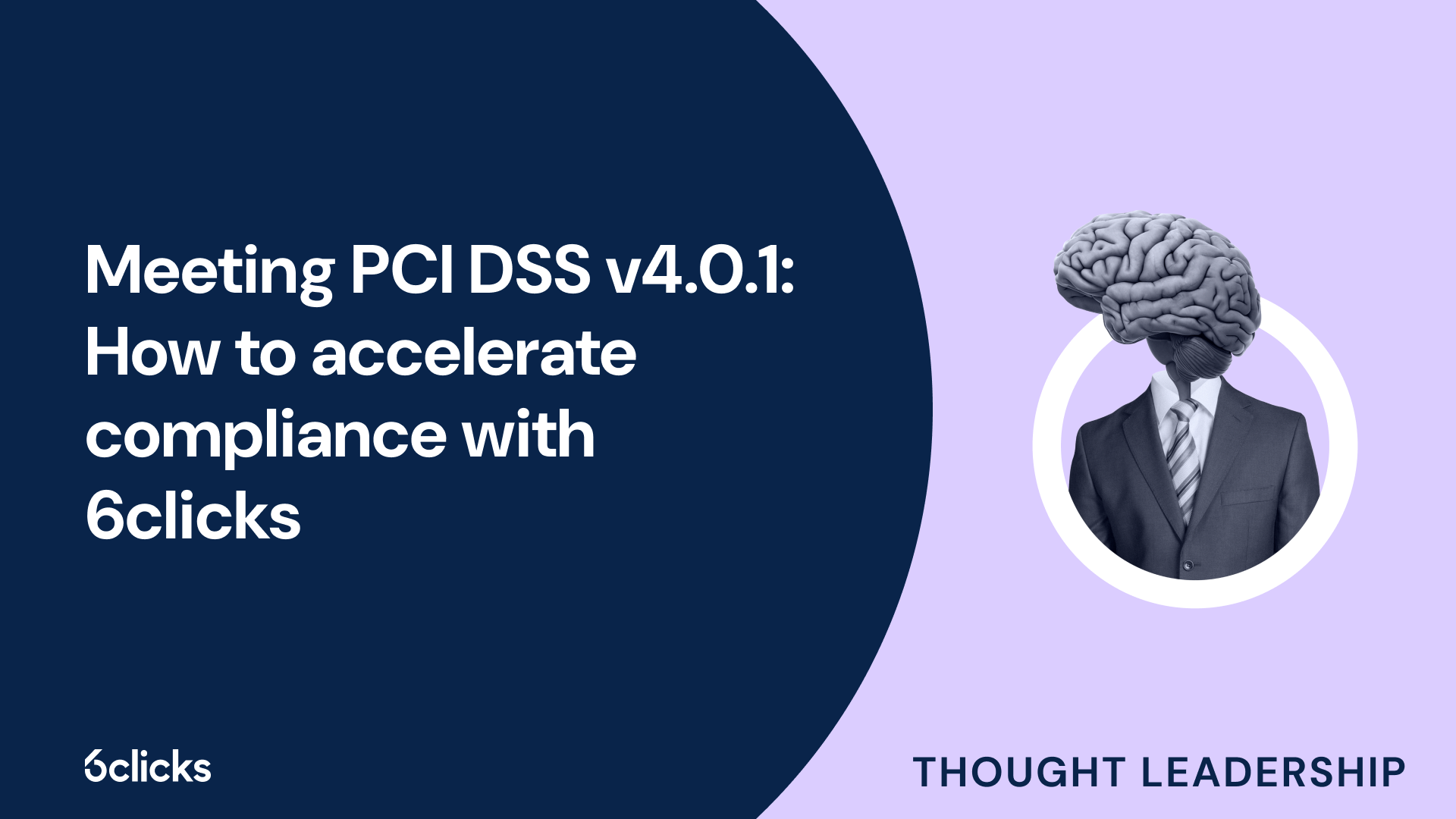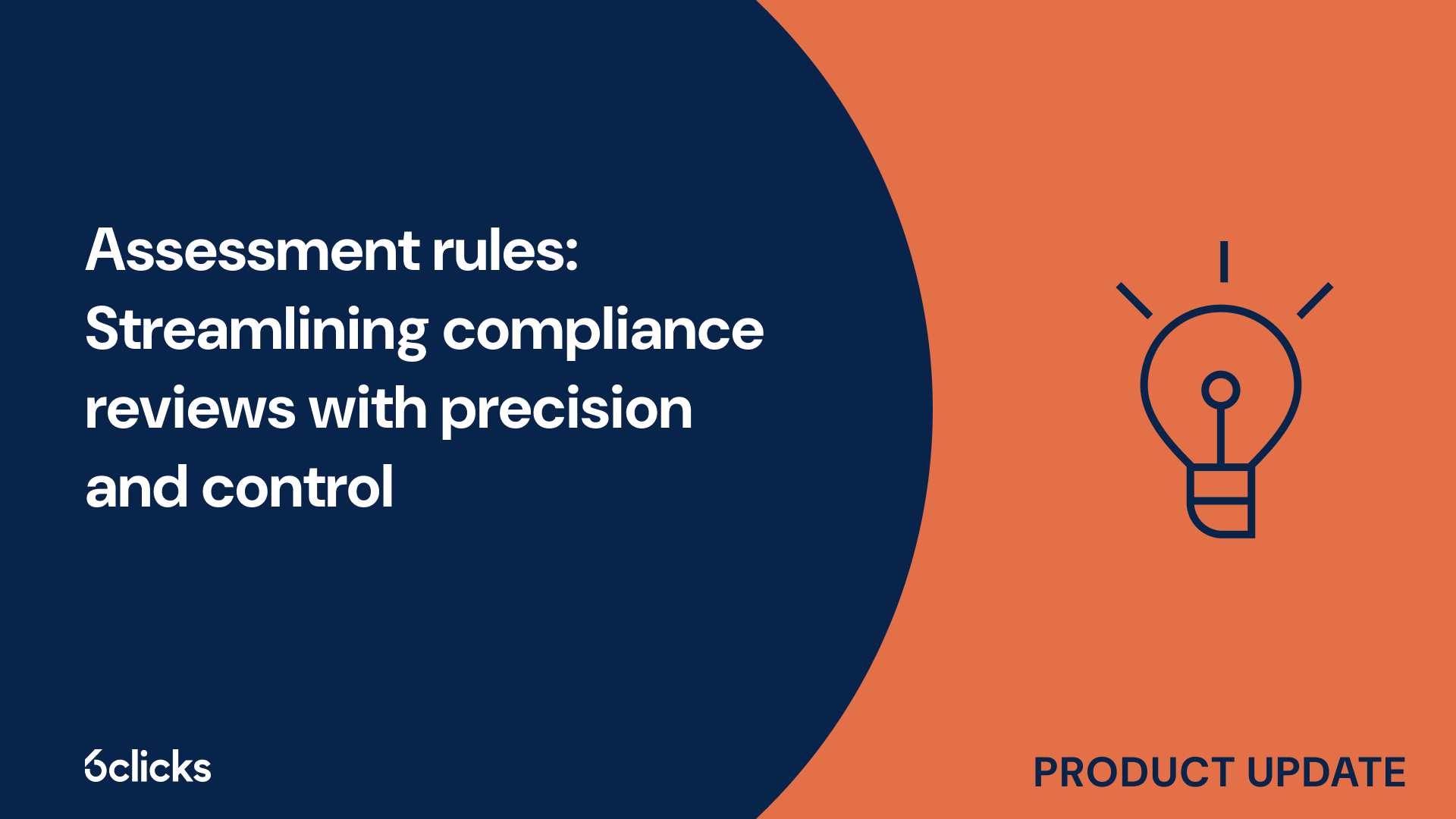Cyber resilience in 2025: Your smart guide to NIST CSF
Boost your organization's cyber resilience with this expert guide to the NIST Cybersecurity Framework. Learn to assess risk, improve security posture, and automate compliance with AI-powered tools.
-1.png?width=200&height=249&name=Group%20193%20(1)-1.png)
Cyber resilience in 2025: Your smart guide to NIST CSF
What is NIST SP 800-53?
NIST SP 800-53, also known as the "Security and Privacy Controls for Information Systems and Organizations," is a publication by the National Institute of Standards and Technology (NIST) that provides guidelines and recommendations for federal agencies and organizations to protect their information systems and data. This comprehensive publication covers a wide range of security and privacy controls that are needed to safeguard federal information systems from cyber attacks, insider threats, human errors, and other potential risks. It includes specific control families such as access controls, inventory control, incident response, and risk assessment, among others. NIST SP 800-53 also provides a catalog of control enhancements to help organizations tailor their security control baselines to meet the specific needs and requirements of their systems. Additionally, it addresses the importance of supply chain risk management and contingency planning, ensuring that organizations have a solid risk management strategy in place to respond effectively to security incidents and maintain a strong security posture. This publication serves as a valuable resource for federal government agencies, civil agencies, and government contractors in defining and implementing the necessary security measures to protect their sensitive information and mitigate cybersecurity risks.
Overview of topics covered by NIST SP 800-53
NIST SP 800-53 is a comprehensive framework established by the National Institute of Standards and Technology (NIST) that provides guidelines and standards for protecting federal information systems. It covers a wide range of topics to ensure the security and privacy of these systems, including control families, insider threats, national security, human error, and privacy controls.
The framework organizes security controls into control families, which are groups of related controls that address specific areas of security concern. These families include access controls, configuration management, incident response, and many others. By organizing controls in this way, NIST SP 800-53 helps federal agencies implement a holistic and systematic approach to security.
The framework also addresses the importance of mitigating insider threats and protecting national security. It recognizes that human error can be a significant cybersecurity risk and provides measures to minimize these risks. Additionally, NIST SP 800-53 incorporates privacy controls to ensure that federal information systems handle personal data appropriately and prevent unauthorized access.
Furthermore, the framework emphasizes the need for supply chain risk management. It recognizes the potential risks associated with relying on third-party vendors and provides guidance on assessing and managing these risks.
Federal agencies and control families
Federal agencies are tasked with protecting national security and managing the vast amount of information they handle. To assist them in this endeavor, NIST SP 800-53 provides a comprehensive framework for implementing effective security controls. The framework organizes these controls into control families, which are groups of related controls that address specific areas of security concern. This organization helps federal agencies implement a holistic and systematic approach to security. By categorizing controls into families such as access controls, configuration management, and incident response, NIST SP 800-53 allows agencies to focus on specific areas of concern and implement appropriate measures to mitigate cybersecurity risks. This provides a structured framework for federal agencies to enhance their security posture and protect sensitive information.
Federal government agencies
Federal government agencies play a crucial role in ensuring compliance with the security and privacy controls outlined in NIST SP 800-53. This publication, developed by the National Institute of Standards and Technology (NIST), provides a comprehensive catalog of security and privacy controls for federal information systems and organizations.
Federal government agencies are required to comply with the standards set forth in NIST SP 800-53 as a mandatory regulatory requirement. They are responsible for implementing the appropriate security measures to protect sensitive information and ensure the confidentiality, integrity, and availability of federal information systems. This includes mitigating cybersecurity risks, addressing insider threats, and establishing incident response plans.
In addition to federal agencies, other types of organizations such as state, local, and tribal governments, as well as private companies that provide goods and services to the federal government, are also required to maintain compliance with NIST SP 800-53. These organizations must establish a relationship with the federal government and adhere to the security control baselines established by the NIST.
Maintaining compliance with NIST SP 800-53 is crucial for federal government agencies and other organizations to safeguard national security, protect against a wide range of cyber threats, and mitigate the potential risks associated with human error or malicious activities. By following the security and privacy controls outlined in this publication, organizations can establish a strong risk management program, enhance their security posture, and ensure the protection of critical information assets.
Control families in NIST SP 800-53
Control families in NIST SP 800-53 are a categorization of security controls that helps organizations align their security measures with industry standards and best practices. These families provide a structured approach to address different aspects of security, allowing organizations to select controls based on their specific needs and risk management strategy.
The control families in NIST SP 800-53 are designed to address a wide range of security and privacy risks faced by federal information systems and organizations. They encompass various types of controls, including technical, administrative, and physical controls. Each control family has a specific purpose and focuses on different aspects of security.
The control families are structured in a hierarchical manner, with a set of base controls and additional control enhancements. The base controls represent the minimum security requirements that organizations must implement to protect their information systems. These controls form the foundation of the security posture.
Control enhancements, on the other hand, provide organizations with additional options to strengthen their security measures beyond the base controls. These enhancements are not mandatory, but they allow organizations to customize their security program based on their specific needs and risk profile.
The latest revision of NIST SP 800-53, Rev. 5, covers 20 families of controls, including access controls, contingency planning, incident response, identification and authentication, auditing and accountability, configuration management, media protection, physical and environmental protection, awareness and training, personnel screening, security assessment and authorization, system and communications protection, risk assessment, supply chain risk management, system and information integrity, program management, privacy controls, acquisition and development, maintenance, and system and services acquisition.
By implementing the controls from these families, organizations can establish a comprehensive and robust security posture, effectively addressing the evolving cyber threats and protecting their information assets.
Insider threats and national security
Insider threats and national security are critical concerns for federal government agencies and organizations when it comes to protecting their information systems and sensitive data. Insider threats refer to the risks posed by individuals or entities within an organization who have authorized access to systems and data but misuse their privileges for malicious intents or unintentionally cause harm, such as through human error. National security, on the other hand, pertains to the protection of the nation's interests, assets, and citizens from threats, including cyber attacks, hostile attacks, and other security breaches. NIST SP 800-53 provides comprehensive guidance and security controls to help federal agencies and organizations address these challenges and develop a robust risk management strategy to safeguard national security and protect against insider threats.
Identifying potential insider threats
Identifying potential insider threats is a critical aspect of ensuring the security and privacy of information systems, especially for federal government agencies. NIST Special Publication 800-53 provides guidance on this issue, emphasizing the need for security awareness training.
To begin with, security awareness training is essential because it educates employees about the different types of insider threats, such as human error or malicious intent, and the potential impact of their actions on national security and organizational operations. NIST 800-53 stresses that this training should cover topics like recognizing indicators of insider threats, reporting suspicious activities, and adhering to security and privacy controls.
To assess the internal security and privacy awareness of system users, organizations should follow a systematic approach. First, they must establish clear policies and procedures that outline expectations regarding security and privacy practices. Second, organizations should regularly communicate these policies to employees to ensure they are aware of their responsibilities. Third, periodic assessments of employees' understanding and compliance with these policies should be conducted. These assessments can include surveys, questionnaires, or even simulations of potential insider threat scenarios.
In addition to security awareness training, organizations should also focus on identifying threats to privacy or system security through employee activities. This involves monitoring and analyzing user behavior patterns and identifying any suspicious or unusual activities that may pose a risk. By implementing appropriate access controls, segregation of duties, and logging and monitoring capabilities, organizations can effectively identify and mitigate insider threats.
Understanding the impact on national security
Insider threats pose a significant risk to national security, as they involve individuals within an organization who have authorized access to sensitive government information and systems. The potential impact of insider threats on national security can be devastating and wide-ranging.
Unauthorized access by insiders can compromise national security by providing access to classified data, confidential information, or sensitive systems. This can result in the unauthorized disclosure of classified information, espionage, or sabotage. For example, a malicious insider with access to classified military plans could leak this information to unauthorized individuals or foreign entities, jeopardizing the safety and security of the nation.
Malicious actions by insiders can also have severe consequences for national security. These actions may include intentionally modifying or deleting critical data, disabling security measures, or disrupting key systems and infrastructure. Such actions can lead to the disruption of government operations, hindering emergency response capabilities, or even enabling cyber-attacks against critical infrastructure.
Identifying and mitigating insider threats is crucial to protecting sensitive government information and systems. Implementing robust access controls, monitoring user activities, and conducting regular security assessments can help identify suspicious behavior or unauthorized access attempts. Swift incident response plans and contingency measures must be in place to minimize the impact of insider threats and protect national security.
Human error and privacy controls
Human error is a common cause of data breaches and can have serious implications for privacy and security. NIST SP 800-53 covers a wide range of control families that address human error and privacy risks in federal information systems. These controls provide guidance on implementing security measures to prevent unintended disclosure of sensitive data, such as implementing access controls to limit user permissions, requiring strong and unique passwords, and training employees on security best practices. Additionally, the publication includes control enhancements that address privacy controls, such as implementing procedures to handle privacy breaches, securing personal identifiable information (PII), and ensuring compliance with privacy regulations. By focusing on human error and privacy controls, organizations can strengthen their risk management strategies and protect individuals' privacy while maintaining the security of federal information systems.
Avoiding human error in systems administration
Avoiding human error in systems administration is crucial for maintaining the integrity and security of information systems. Human error can have significant consequences, from system failures to data breaches, and can severely impact organizational operations and reputation.
To mitigate the risk of human error, organizations can implement several strategies. One effective approach is investing in continuous training and education for system administrators, ensuring they have the necessary knowledge and skills to perform their tasks accurately. Additionally, organizations should establish clear and standardized procedures for system administration tasks, reducing the likelihood of mistakes.
Automating routine and repetitive tasks can also help minimize human error. By implementing automated tools and scripts, organizations can reduce the reliance on manual processes, decreasing the chances of mistakes and improving overall efficiency.
Regular audits and reviews of system administration processes are essential to identify and rectify any potential errors. These audits can identify areas where errors are more likely to occur, allowing for targeted mitigation strategies to be implemented.
Furthermore, organizations should foster a culture of accountability and open communication, encouraging system administrators to report any mistakes or near misses. This will enable the organization to promptly address and rectify errors, minimizing their impact on information systems.
By implementing these strategies, organizations can significantly reduce the likelihood and impact of human error in systems administration, ensuring the continuous integrity and security of their information systems.
Enhancing privacy controls to mitigate risk
Enhancing privacy controls is crucial in mitigating risks associated with the unauthorized access to files and data through public web servers. By implementing certain measures, organizations can strengthen their privacy controls and protect sensitive information from falling into the wrong hands.
One important measure to consider is restricting access to files and data through public web servers. This can be achieved by implementing access control mechanisms such as user authentication and authorization. By requiring users to provide valid credentials, organizations can ensure that only authorized individuals are granted access to sensitive data. Additionally, organizations can utilize encryption techniques to further protect data while in transit over public networks.
Another significant aspect of privacy controls is the implementation of multi-factor authentication (MFA). This security measure adds an extra layer of protection by requiring users to provide multiple forms of identification, such as a password and a unique code sent to their mobile device. MFA significantly reduces the risk of breaches in cases where credentials are compromised since the attacker would need both the password and the authorized device to gain access.
To ensure that access to data is limited, organizations should follow a series of steps. First, they need to identify the specific data and files that require restricted access. Second, they should implement access control measures, including authentication mechanisms and user roles and permissions. Third, regular monitoring and auditing of access logs should be carried out to detect any unauthorized attempts or suspicious activities. Finally, organizations need to regularly update and patch their systems to address any vulnerabilities that could be exploited to gain unauthorized access.
Implementing and enhancing privacy controls is essential in mitigating privacy risks and protecting sensitive data. By restricting access, implementing multi-factor authentication, and continuously monitoring and updating systems, organizations can significantly reduce the likelihood of unauthorized access and maintain the privacy and integrity of their data.
Supply chain risk management and risk management Program
Supply chain risk management is a critical aspect of cybersecurity and risk management for federal government agencies. This process involves identifying, assessing, and mitigating risks associated with the supply chain that supports the delivery of products and services. NIST SP 800-53 provides guidelines and controls to help organizations establish an effective supply chain risk management program. These controls include measures to verify the integrity of hardware and software components, assess the security posture of suppliers and vendors, and implement security requirements throughout the supply chain. By implementing these controls, organizations can reduce the risk of unauthorized access, tampering, and other security incidents that could compromise the integrity and confidentiality of their information systems. A comprehensive risk management program, guided by NIST SP 800-53, enables federal agencies to identify, prioritize, and address cybersecurity risks in a systematic way, ensuring the security and privacy of their information systems and the data they process.
Ensuring secure supply chains
Ensuring secure supply chains is a critical aspect of safeguarding organizations against various risks and vulnerabilities. Supply chain risk management controls help organizations identify, assess, and mitigate potential risks within their supply chain.
Policies and procedures play a vital role in supply chain risk management by providing guidelines for effective supplier management, assessments, and inspections. These policies outline the requirements for selecting and vetting suppliers, establishing contractual obligations, and monitoring their performance. Supplier assessments evaluate their security and privacy controls, ensuring their compliance with industry standards and regulatory requirements.
Regular inspections help verify that suppliers adhere to established security and privacy measures. This includes conducting on-site visits, scrutinizing security systems and processes, and assessing their risk management strategies. Inspections provide important insights into suppliers' operational practices, allowing organizations to identify any weaknesses or vulnerabilities.
NIST SP 800-53 offers valuable guidance for secure supply chains. This publication outlines a catalog of control families and provides a comprehensive set of security controls and control enhancements. It helps organizations establish security control baselines and implement appropriate security measures to protect against cyber threats, insider threats, human errors, and other risks.
Establishing a risk management program
Establishing a risk management program is crucial for organizations to effectively counter and mitigate risks in the supply chain. This program involves the development and implementation of policies and procedures that outline the necessary steps to assess and manage suppliers, as well as inspect supply chain systems and components.
To address supply chain risks, organizations need to have clear and comprehensive policies and procedures in place. These policies define the framework for selecting and vetting suppliers, ensuring that they meet the necessary security and privacy controls required by industry standards and regulatory requirements. Additionally, contractual obligations are established to outline the expectations and responsibilities of the suppliers regarding security measures.
Supplier assessments play a vital role in the risk management program. These assessments evaluate the security controls and measures implemented by the suppliers, confirming their compliance and identifying any potential weaknesses or vulnerabilities. This allows organizations to make informed decisions about whether to continue working with certain suppliers or take corrective measures to strengthen their security posture.
Regular inspections are essential for verifying the effectiveness of supply chain systems and components. By conducting on-site visits and scrutinizing security systems and processes, organizations can ensure that the suppliers' practices align with the established policies and procedures. Inspections provide valuable insights into the overall risk management strategy and help identify areas for improvement.
Adopting a risk management program enables organizations to take a proactive approach towards identifying and mitigating supply chain risks. By implementing robust policies and procedures, organizations can ensure the long-term security and resilience of their supply chains. This approach allows for continuous compliance, as regular assessments and inspections help maintain an up-to-date understanding of the suppliers and their security measures, ensuring ongoing risk mitigation efforts.
Security requirements, impact level, and cyber attacks
NIST SP 800-53 is a comprehensive security framework that provides guidance on selecting and implementing security controls for federal information systems. It addresses the specific security requirements of federal government agencies and helps them protect against a wide range of cyber attacks.
Security requirements refer to the specific safeguards and measures that need to be implemented to protect federal information systems. These requirements are determined based on the impact level of the system, which is a measure of the potential harm that could result from a security breach or unauthorized access. Impact levels are categorized as low, moderate, or high, and each level has its own set of security requirements.
The controls specified in NIST SP 800-53 are designed to meet these security requirements. They provide a catalog of control families that address various aspects of information security, such as access controls, contingency planning, incident response, and configuration change control. These controls are organized into security control baselines, which are tailored to specific impact levels and ensure that appropriate security measures are in place.
The aim of these controls is to protect federal information systems against a wide range of cyber attacks. These attacks can include insider threats, human error, cyber-physical attacks, unauthorized access, and hostile attacks. By implementing the recommended controls, federal government agencies can mitigate cybersecurity risks and ensure the confidentiality, integrity, and availability of their information systems.







